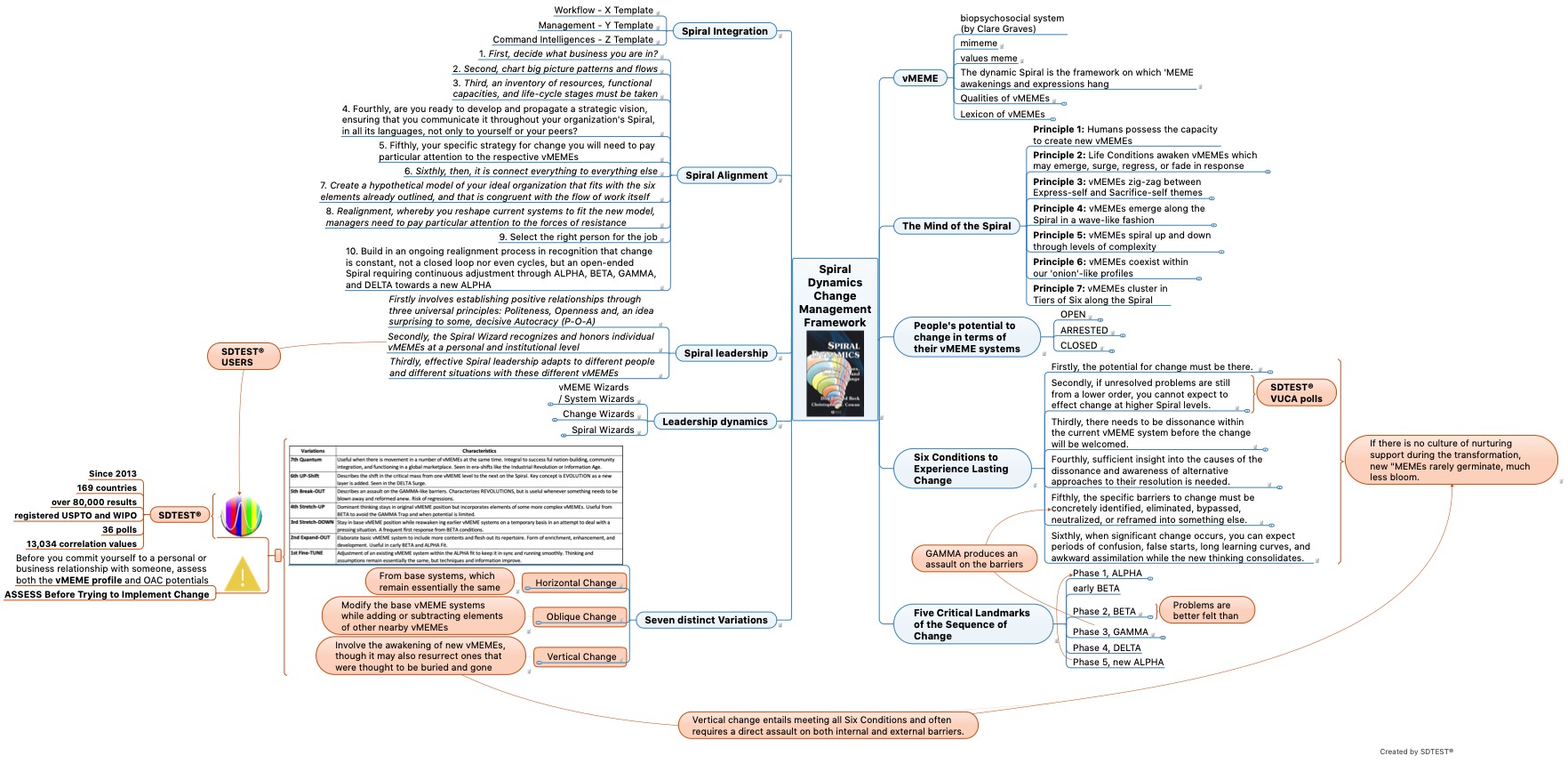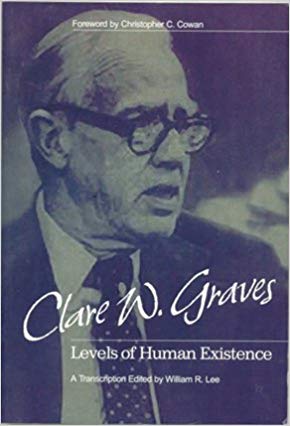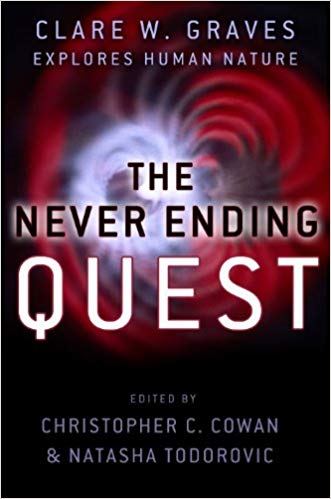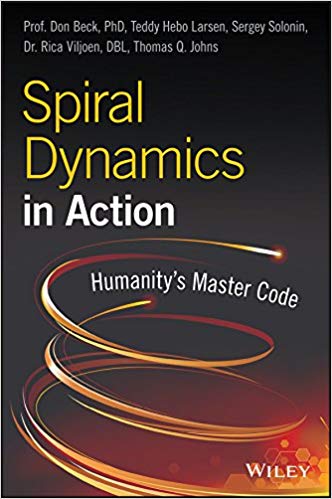What is the theory of Spiral Dynamics?
Spiral Dynamics is a model of the evolution of individuals and societies' value systems (memes). Each has its code and color with a unique set of value orientations and priorities that form its beliefs and values. People and societies dynamically move through these levels depending on the changing conditions of life, experience, and challenges that stand in their way.
Who created Spiral Dynamics?
Personal Data:
Date of Birth: December 21, 1914
Date of Death: January 3, 1986
The term Spiral Dynamics was used by Don Beck and Christopher Cowan in the book «Spiral Dynamics: Mastering Values, Leadership, and Change»
Personal Data of Don E. Beck:
Date of Birth: January 1, 1937
Date of Death: May 24, 2022
Print Length: 352 pages
Publisher: Wiley-Blackwell; 1 edition (June 9, 2008)
Publication Date: June 9, 2008
Language: English
What color are you Spiral Dynamics?
The beige value system represents human development's most basic and instinctual level. It is characterized by a focus on survival and physical needs and a lack of self-awareness or ability to reflect on one's actions. This value system is associated with pre-human and early human societies and is considered the most primitive of the eight value systems in the Spiral Dynamics model. It is seen as an undifferentiated, reactive stage of human development and is primarily concerned with meeting basic survival needs.
The purple value system represents a focus on tradition and spirituality and a belief in the supernatural. It is characterized by a strong sense of community and a belief in an influential, all-knowing leader or god. According to the Spiral Dynamics model, this value system is often associated with traditional agricultural societies and is considered the second level of human development. People in purple vMeme are guided by myths, rituals, and taboos and have a strong sense of belonging to a group. In addition, they have a strong sense of identity and are guided by the laws and beliefs of their ancestors.
The red value system focuses on power, self-expression, and individualism in Spiral Dynamics. It is characterized by a strong sense of self, impulsiveness, and a desire for immediate gratification. According to the Spiral Dynamics model, this value system is often associated with warrior cultures and is considered the third level of human development. People in red vMeme are driven by their impulses and desires, tend to be self-centered, focus on their own needs, and are often seen as dominant, assertive, and competitive. They have little concern for rules or laws and are willing to use force to achieve their goals. They tend to be impulsive and act on their desires without considering the consequences.
The blue value system focuses on order, rules, and tradition. It is characterized by a strong sense of duty and discipline and a belief in a moral code that is handed down from a higher authority. According to the Spiral Dynamics model, this value system is often associated with traditional, religious, or military societies and is considered the fourth level of human development. People in blue vMeme are guided by strict codes of conduct, and they are conformist; they tend to be rule-bound and follow a strict hierarchy. They tend to be loyal to their group or organization and have a strong sense of duty and responsibility. They strongly believe in a moral code or laws handed down by a higher authority and tend to be very traditional, conservative, and religious. They have a strong sense of right and wrong and tend to be judgmental of others who do not conform to their beliefs.
The orange value system focuses on reason, science, and technology. It is characterized by a focus on achieving goals and objectives through using rational, logical thinking and applying scientific methods. According to the Spiral Dynamics model, this value system is often associated with modern industrial societies and is considered the fifth level of human development. People in orange vMeme tend to be ambitious and goal-oriented; they value progress, efficiency, and results. They tend to be rational, logical, and analytical in their thinking and problem-solving. They are driven by a desire for knowledge and understanding and use scientific and technological methods to achieve their goals. They tend to be individualistic and competitive, valuing independence and self-reliance. They have little regard for tradition and are skeptical of spiritual or religious beliefs.
The green value system represents a focus on community and ecology, as well as a concern for the well-being of all. It is characterized by a holistic, systems-thinking approach and values such as unity, cooperation, and sustainability. This value system is often associated with post-modern and post-industrial societies. It is considered to be the most advanced of the eight value systems in the Spiral Dynamics model.
The next value system after green is the
yellow or integral value system. This system represents the ability to integrate and transcend the previous systems and is characterized by the ability to see multiple perspectives, a focus on personal growth and development, and an understanding of complex systems. It is considered the most challenging and advanced value system and is associated with a holistic, integrative approach to understanding the world.
The turquoise value system represents a holistic, integrated, and ecological perspective. A focus on the interconnectedness of all things and recognizing the interdependence of human and natural systems characterizes it. According to the Spiral Dynamics model, this value system is often associated with post-modern and post-industrial societies and is considered the sixth level of human development. People in turquoise vMeme tend to be holistic and integrative, recognizing the interconnectedness of all things and valuing diversity, tolerance, and inclusiveness. They tend to be concerned with the well-being of both people and the planet and are driven by a desire for sustainability and harmony with the natural world. They tend to be spiritual but not religious and have a deep connection to nature and the more expansive universe. They have a strong sense of compassion and empathy and tend to be actively engaged in social and environmental causes.
Spiral Dynamics Theory has found wide application in coaching, business consulting, and educational programs for several key reasons:
1. Simplicity and universality of the model
Understandability: Spiral Dynamics provides a simple and understandable model for describing the development of human values and behavior patterns. This model is easy to understand and apply in practice.
Universality: The theory describes universal stages of development that can be applied to different cultures and contexts. This makes it useful in international and diverse organizational environments.
2. Flexibility and adaptability
Adaptability to different situations: Spiral Dynamics allows approaches and strategies to be adapted depending on the stage of development of an individual or organization. This makes it effective in working with different levels and types of organizations.
Transition Stages: The model describes the transitions between developmental stages, which helps coaches and consultants effectively manage change and transformation.
3. Practical Application
Specific Tools: The theory provides specific tools and methods for assessing and managing development, which makes it practical and applicable in real life.
Focus on Development: Spiral Dynamics emphasizes development and growth, corresponding to the main goals of coaching and consulting.
4. Helping with Change Management
Understanding the Dynamics of Change: The model helps to understand how people and organizations experience change and provides strategic approaches for managing these changes.
Values Alignment: Spiral Dynamics helps align values and behavior patterns with the organization's goals, which is essential for successful change implementation.
5. Improving Communication and Collaboration
Teamwork: The theory helps improve teamwork by providing a common language and understanding for describing different viewpoints and interaction styles.
Conflict Resolution: Spiral Dynamics can analyze and resolve conflicts by understanding differences in values and motivations.
6. Personal Development
Self-Understanding: The theory promotes a deep understanding of one’s values and motivations, the basis for personal development.
Leadership: Spiral Dynamics helps leaders understand employees' different development levels and adapt their approaches to improve management effectiveness.
7. Educational Programs
Structured Training: The model offers a structured approach to training that can be easily integrated into educational programs.
Integration with other theories: Spiral Dynamics can be integrated with other approaches and theories, making it useful in interdisciplinary educational contexts.
What is the Spiral Dynamics test (SDTEST®)?
The Spiral Dynamics Test consists of 5 statements and several variants that continue these statements:
1) provide information about the values and human behavior models based on them in the current conditions of his life, and not about the type of his personality,
2) have nothing to do with the types of the personality of a person,
3) help to understand the motivational core and the central life values of a person in the current conditions of his life,
4) help to understand the peculiarities of thinking and basic personality programs of a person in his current conditions of life (why he thinks so and makes decisions);
5) provide information on what values should be taken by a person to take place in a team of turquoise organizations (new living conditions).
The values of one color expressed in% have a relative (not absolute) value concerning another color. For example, the percentage of percentages (%) in 8 colors is 100%. Thus, 33% of one color to 0% of another color show a significant predominance.
Test results you are considering:
1) it is just a declaration of values by humans,
1.1. you can build a forecast of a person's (people's group) behavior model based on their declared values in the current conditions of life,
1.2. this forecast requires an adjustment for observing the actual behavior of a person (a group of people),
2) can help you both to decide your behavior towards this person (a group of people) and to decide your readiness to work with a person (group of people) to accept them (and) new values for living in pristine conditions.
IMPORTANT!
When living conditions change, a person can change his behavioral pattern.
The database contains 8048 individual test results (diagrams), which show many models of human behavior in different living conditions.
Please note that this test is currently being validated. While it is based on the established theoretical framework of Spiral Dynamics, its results should be considered as preliminary and for informational purposes only.
Where is Spiral Dynamics used?
The use of Spiral Dynamics in project management is indicated on the
Project Roadmap from www.project-roadmap.com in the Motivation section.
What are the books on Spiral Dynamics?
Levels of Human Existence Paperback – 2004
The Never Ending Quest: Dr. Clare W. Graves Explores Human Nature: A Treatise on an emergent cyclica Hardcover – 2005
Book «Spiral Dynamics in Action: Humanity’s Master Code»
Print Length: 296 pages
Publisher: Wiley; 1 edition (May 29, 2018)
Publication Date: June 11, 2018
Language: English





